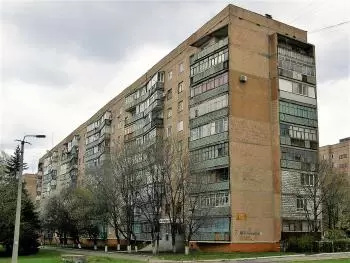
The Kramatorsk radiological accident was a radiation accident that occurred in Kramatorsk (Ukrainian SSR) from 1980 to 1989. It was found inside the concrete wall of an apartment building with a dose rate of gamma radiation exposure in the surface of 1800 R / year.
The incident caused the death, according to various sources, from two to six people. Seventeen people were found to have had one dose of gamma radiation exposure.
Origin of the radiological accident
In the late 1970s, a source of ionizing radiation of the IGI-Ts-4 type was lost at the Karansk quarry in the Donetsk region. It was a highly radioactive cesium-137 capsule with an activity of 5.2 × 1010 Bq. The capsule was used in a commercially produced crushed stone radioisotope level meter.
The capsule could not be found.
Consequences of the Kramatorsk accident
In 1980, in Kramatorsk, when building a house, a concrete wall was put into operation on Gvardeytsiv Kantemirovtsiv Street between apartments 85 and 52.
The lost capsule was boarded up on one of the walls of this house along with rubble. It emitted approximately a dose rate of 1800 R/yr.
The first deaths of leukemia
In the summer of 1981, an 18-year-old girl died in one of the apartments. A year later, her 16-year-old brother and her mother also died.
Another family moved into the apartment. However, his teenage son died in 1987 and his younger brother became seriously ill.
All those people died of leukemia .
The doctors could not find the cause of the disease and explained that it was due to a hereditary predisposition.
How did they find the cause of the Kramatorsk disaster?
The father of the second family came to the sanitary and epidemiological station with a request to check the radiation background in the house.
A health physicist conducted a study in which he detected dangerous levels of radiation. Radioactive decay was incredibly high in various parts of the house.
Finally, in 1989, a small capsule containing highly radioactive material was found inside the wall. The authorities cut through the wall and were able to extract the capsule.
The city of Kramatorsk
Kramatorsk is a city located in the Donetsk Oblast, Ukraine. It is located approximately 80 kilometers north of the city of Donetsk. Kramatorsk is an important industrial and cultural center in the region.
The city has a diverse population and is served by a variety of industries, including heavy machinery, metallurgy, engineering, and construction materials production. It is also known for its important military airfield.
Characteristics of the released isotope: Cesium-137
Cesium-137 (Cs-137) is a radioactive isotope of the element cesium. It is produced as a byproduct of nuclear fission in nuclear reactors and nuclear weapons. Cs-137 has a half-life of about 30 years, which means it takes about 30 years for it to break down in half.
Cs-137 mainly emits gamma radiation during its radioactive decay. Gamma radiation is highly energetic electromagnetic radiation and can easily penetrate matter. This property makes Cs-137 potentially hazardous to human health if it is exposed to high levels of radiation or if it enters the body.
The main concern with Cs-137 is its potential for environmental contamination and its long-term persistence. If released into the environment, Cs-137 can be carried by air currents or deposited on the Earth's surface through precipitation. It can contaminate the soil, bodies of water, and vegetation, posing a risk to ecosystems and human populations.